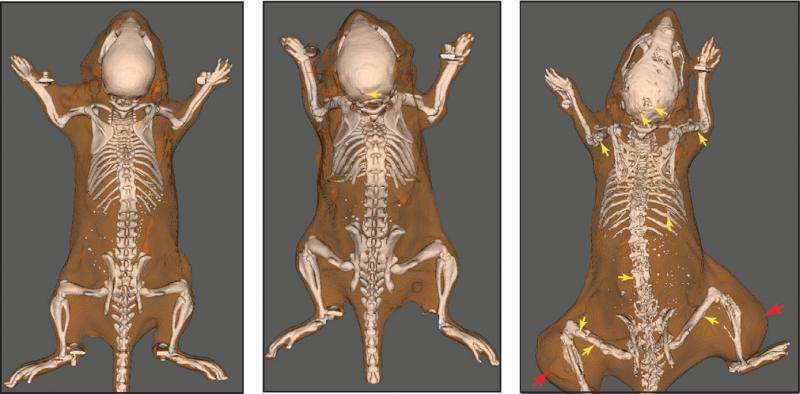Bone cancer researchers discover how to block, potentially treat osteosarcoma

Scientists at Princess Margaret Cancer Centre have discovered that blocking the master regulator of bone renewal stops osteosarcoma - the most common primary bone cancer in children and teens, and the malignant disease that was fatal for Canadian icon Terry Fox.
The proof-of-concept findings, published online today in Science Translational Medicine, establish the importance and function of the bone master regulator, a protein known as RANKL, in bone cancer and set the stage to develop rationalized targeted therapy for patients, says principal investigator Rama Khokha, Senior Scientist at the Princess Margaret Cancer Centre. Dr. Khokha is also a Professor in the departments of Medical Biophysics and Laboratory Medicine and Pathobiology at the University of Toronto.
"We now understand the molecular basis of how RANKL drives osteosarcoma and believe this new information could potentially be rapidly translated into the clinic as a new therapy for patients," says Dr. Khokha.
"There is already a clinically-approved RANKL-blocking drug currently being used to treat other bone diseases. The next step is to determine whether this particular drug could be adapted to treat osteosarcoma and improve outcomes for these patients. As there has been little improvement in treating this type of bone cancer for the past 20 years, we are eager to find out."
She adds that in the U.S., the National Cancer Institute has recently approved a Phase 2 clinical trial to test the drug in osteosarcoma patients whose cancer either recurs or resists treatment.
In a series of pre-clinical lab experiments, the Khokha team systematically worked out the role and mechanism of RANKL in driving tumor growth and demonstrated that blocking it effectively stops aggressive osteosarcoma in several different genetic models. It could also suppress the spread of osteosarcoma to the lung, which is the leading cause of death for patients.
In the study, lead author Yan Chen concludes that the pre-clinical findings provide a strong rationale to consider RANKL blockade for the treatment and prevention of osteosarcoma in humans and present a viable pathway to precision therapy.
Cancer statistics in Canada and the U.S. show that osteosarcoma occurs most often in males aged 10 to 30 years. If the cancer is localized, with treatment the five-year survival rate ranges from 60% to 80%; however, if the cancer spreads, the survival rate drops to between 15% and 30%.
Dr. Khokha began researching osteosarcoma more than a dozen years ago, inspired by Terry Fox, who lost his life to it at age 22 in 1981, in the middle of his cross-Canada run to raise money and awareness for cancer research. His legacy lives on in the annual Terry Fox Run, which has raised hundreds of millions of dollars from participants all around the globe.
More information: "RANKL blockade prevents and treats aggressive osteosarcomas," Science Translational Medicine, stm.sciencemag.org/lookup/doi/ … scitranslmed.aad0295
















